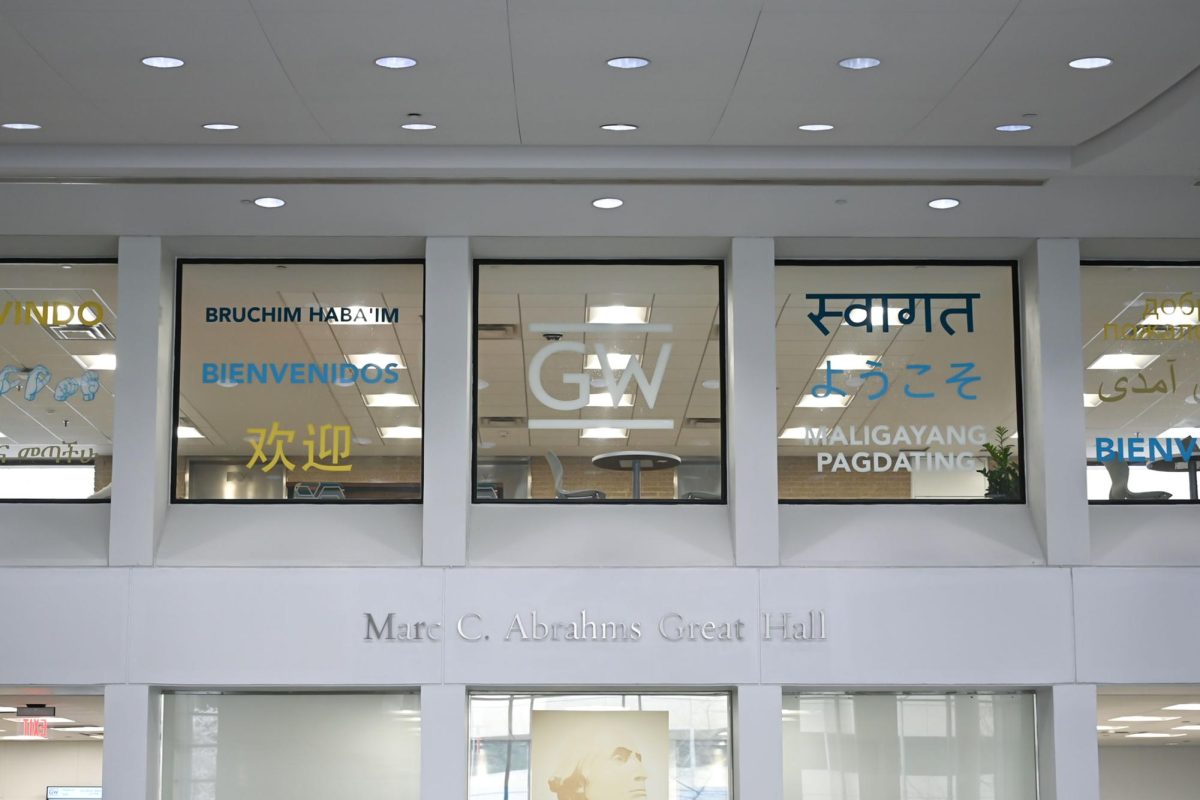The University saw a nearly 15 percent decrease in new international enrollment in 2024, according to a report at a Faculty Senate meeting last month.
New international student enrollment dropped from 1,593 in fall 2023 to 1,356 in fall 2024, ending a three-year period of recovery after a significant drop due to the COVID-19 pandemic in 2020. Provost Chris Bracey said at a Faculty Senate meeting that GW has recovered to pre-pandemic international enrollment levels this year despite a continued decrease in new Chinese student enrollment due to “lingering” travel and visa restrictions on students.
A sharp drop in Chinese student enrollment since 2020 largely drove the decline in new enrollments, with 827 Chinese students enrolled in fall 2024 and 1,555 in fall 2020 — a nearly 47 percent decrease, according to data provided by University spokesperson Julia Garbitt.
The State Department issued about 20,000 fewer visas to Chinese students in 2024 than in 2019, and the refusal rate of Chinese student visas — the number of visas applications denied compared to the number approved — rose from 25 percent in 2019 to 36 percent in 2024, according to State Department visa statistics.
“Students from China represent the majority of the decline in our international student population, and although we hope to regain much of this student population in the future, it’s still difficult,” Bracey said at the meeting.
Overall international enrollment remained stable, only decreasing by eight students — 3,536 in fall 2023 to 3,528 in fall 2024 — according to the enrollment dashboard.
Chinese students remain the largest demographic of international enrollment at GW in 2024, with 833 students from China enrolled compared to 813 from India, the second largest demographic of international enrollment at GW, a narrowing gap from 2023 when 981 students were from China and 706 from India. In 2022, the divide was even wider, with 1,100 students from China and 444 from India, according to the enrollment dashboard.
India became the leading source of international students in the United States during the 2023-24 academic year, with 331,602 total students, according to the Institute of International Education.
Garbitt said the University was “anticipating” a drop in Chinese student enrollment after the pandemic and launched recruitment efforts in 2021 aimed at international student “market diversification.” She said the University’s overall total international enrollment has grown by over 18 percent or 558 students since the COVID-19 pandemic in 2021, largely from graduate students.
Garbitt said the University is now seeing application growth from central and southern Africa and South America, along with other countries where GW has “traditionally” attracted international students.
“These efforts have been successful, expanding access for students from a broader range of countries and strengthening the University’s international student community,” Garbitt said in an email.
Chris Glass, a professor of higher education at Boston College, said the University’s initiative to attract international students from a broader range of countries was “smart and strategic” and likely mitigated what would have been a “significant shock” when Chinese student enrollment began to decline following the pandemic.
He said private universities, like GW, rely on international students, who typically pay full tuition because university officials rarely grant them financial aid, as streams of revenue, which may cause budgetary issues if fewer choose to attend. The University does not provide need-based or U.S. government aid to international students, according to its website.
“Most institutions when facing this shortfall are going to have some serious budget conversations about the implications,” Glass said. “Either ways to diversify revenue sources or cuts that would be necessary.”
He said issues, like the rise of anti-Asian racism and gun violence, have caused students and their parents to reconsider studying in the United States, especially at schools with urban campuses like GW, where the perceived level of crime is higher.
There was one incident of a hate crime in 2023, one in 2022 and four incidents of hate crimes in 2021, according to the 2023 Annual Security & Fire Safety Report. Sixty-five percent of D.C. residents said crime is an “extremely serious” or “very serious” problem in the District, according to a Washington Post-Schar School poll in May 2024.
“If a student simply just puts on social media that they felt threatened by someone, like a nonhoused person, that can get back home,” Glass said. “It doesn’t have to hit the news.”
Xiaofeng Wan, the former associate dean of admission and coordinator of international recruitment at Amherst College, said China’s recent economic downturn concerned families about the cost of a U.S. education. He said Chinese families and students evaluate if the “outcome outweighs the cost” of a U.S. education before deciding to attend.
He said Chinese students still view the United States as their top study destination and remain passionate about a U.S. education, but growing concerns over the U.S. as a “politically stable” destination have led them to plan backups.
“We’re seeing a lot of families are considering applying to colleges and multiple destinations all at once,” Wan said. “Not just the U.S., but also U.K., Canada and Australia just to have a plan b, c or d, just in case anything happens in the United States that prevents their kids from going.”
Denis Simon, the former executive vice chancellor for Duke Kunshan University in China, said concerns about campus safety issues, like gun violence, anti-Asian racism and an “overall change” in the U.S.-China relationship, have contributed to the drop in Chinese student enrollment. He added that an increased emphasis on Chinese recruitment in Europe, Australia and New Zealand to boost the “internationalization” of their universities played a role in the decline of U.S.-Chinese enrollment.
“That’s been sort of a competitive factor that has driven Chinese students to be attracted to some of these other places simply because there’s a more aggressive posture by these countries trying to get Chinese students to look at their places for study,” Simon said.
Simon said the bulk of Chinese students come to the United States for career enhancement, hoping they can leverage their education into a good job in the United States, Europe or back in China.
He said the recent increased visa refusal rate and stricter scrutiny of visa applications has left applicants “extremely worried,” leading many students to not apply for a visa at all.
Simon said American universities should maintain high levels of Chinese student enrollment to promote “international understanding” but that they should also look to recruit more students from other countries in response to the decline.
“If I was GW, my goal would be to try to sustain the Chinese student presence, while at the same time fortifying the ranks of my student body with students from several other countries that maybe weren’t as highly represented as they might be,” Simon said.
Paulina Vera, a professorial lecturer of law who supervises the Immigration Clinic at GW Law, said the current Trump administration’s policies, like immigration crackdowns and cuts to federal programs, may make some international students “think twice” before coming to study in the United States.
The Trump administration has targeted college campuses, including at Columbia, Brown, Georgetown and Tufts universities, when conducting immigration enforcement.
“Student visa holders who may be traveling outside of the country and attempting to come back in the country may be precluded from reentering the country,” Vera said. “For example, at the Immigration Clinic, we’ve been advising individuals, including student visa holders, to not travel outside of the country because, again, there is no guarantee that they would be allowed back.”





